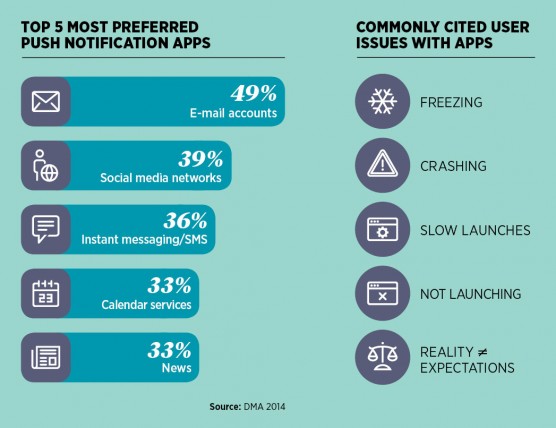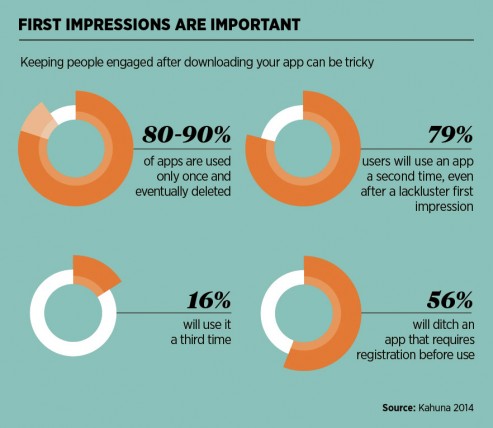These days the phone in your pocket is your camera, diary, games console, communications hub, video player, TV screen and shopping guide. According to recent Google data, 54 per cent of all holiday shoppers say they plan to shop on their smartphones throughout the shopping day.
Google says that while shoppers spend 7 per cent less time in each mobile session, smartphone purchases have gone up 64 per cent over the last year. Now 30 per cent of all online shopping purchases take place on mobile phones, and this is happening all day long and at all hours.
The Google data shows that shopping is shorter and more purposeful, but shopping-related mobile searches have grown more than 120 per cent and are nearing those on desktop. The trend for mobile-first design is already well underway, with consumer experiences designed around mobile first and then extended to other channels, rather than the other way round.

It stands to reason then that retailers need a strong mobile presence to compete on customer engagement. But this means a lot more than enabling your website to be easily viewed on a smaller screen. So what actually constitutes having a good mobile presence?
Engaging customers
Max Müller, managing director of fashion aggregator Stylight, is in charge of the company’s user experience and mobile product. He says: “Optimising for mobile is more than just having a mobile presence. In fact, having fully optimised and native mobile apps is a prerequisite.”
Still, Mr Müller says, a lot of companies focus on just one or the other. But mobile websites are less a destination and more a point of information. “Our apps have a much higher engagement and are used eight times a month, twice a week for an average user,” he says.
“We want to engage our customers at every touchpoint, but on a responsive website you can’t swipe and double tap, and it’s much harder to implement gestures. But on native apps you can take advantage of the finger gestures that people use, you can optimise for speed and you can pre-render things in the background to make them run faster.”
Instead of just plonking website contents on a mobile site, says Mr Müller, it needs to be repackaged properly. For example, he says, if you shop on a mobile device, you want to see ten, twenty, fifty items that get your heart going, so companies don’t want to list 1,500 items for sale.
“And you have to remember,” he adds, “these top 50 or 100 products are going to be different for you and for me. Personalisation becomes even more important on mobile because you can increase the relevancy of what you show.”
Mr Müller thinks there’s still not a great connection between underlying data science and strategic decision in mobile retail. “I think it’s perceived as difficult to match more creative people and analytical people,” he says, “but you need cross-functional set-ups, not silos.”
Utilising mobile apps
Eddie Vassallo is chief executive of web and mobile developer Entropy Works, which recently created an app for the Art Fund, with the specific aim of using customer engagement to increase its membership figures. “It was agreed at the briefing stage that the design of this app would focus heavily on facilitating the sharing of trustworthy information and views among users, rather than simply churn out information,” he says.
“Although apps are often designed to run on one or two platforms, we designed the Art Guide so that it would be accessible to everyone, across all devices including Apple Watch. This multi-platform rollout helped to complement the existing website, providing a second, more immersive channel for mobile users.

“It would have been relatively easy to design an app which simply returned information from a search engine facility on a mobile device. However, as this example demonstrates, organisations need to consider the true value and capability of mobile in meeting not only their objectives, but those of the user.”
Dan Salmons, managing director of mobile and online at payment technology specialist PayPoint, says: “The mobile phone is an intensely personal device – we take it everywhere, we send personal photos and texts on it, we even put it on the table in front of us when we sit down for lunch. So it is the device where more than any we expect to interact in a rapid, informal fashion, suiting both how personal it is to us and the fact that we’re using it on the move.
Challenges with mobile
“This is both an opportunity and a problem for those creating user experiences on the mobile. Get it right and you can engage a consumer like no other device, becoming a seamless part of their lives. Get it wrong and you frustrate, baffle or irritate them just when they want to be getting on with their lives.”
The act of paying is not something the consumer wants to repeat time over, says Mr Salmons. “Add in the need for appropriate security and you can see why intelligent and thoughtful design of the payments experience is rapidly becoming a critical component for anyone providing mobile services,” he says.

But payments do pose a particular challenge. Mr Salmons says: “In the past, you had to stop what you were doing to pay. However, the best websites and mobile apps now integrate these seamlessly into the experience, so you don’t register a separation between ‘doing’ and ‘paying’.
Successful apps for activities such as hailing a taxi, buying a coffee or paying for parking do exactly this.”
But they still all need to look different on a tablet, mobile or smartwatch, since the user requires different things when using each of these devices. “Mobile presence means really understanding and reflecting what a consumer needs in and across all the various channels they use,” he says.
The best mobile apps take advantage of the unique qualities of the mobile phone – its screen, internet connection, mobility – and then use them to transform the whole experience.
“For example, if you’re parking at a train station car park, the use of an app means you can now pay for parking after you get on the train. This can be taken a step further if the parking experience itself is then updated to give customers ten minutes’ grace time after parking to get on the train and pay,” says Mr Salmons. “In this way, the experience becomes truly designed around what mobile devices enable, and not the other way round.”
But Rachel Lane, director of voice of the customer analytics in Europe, the Middle East and Africa for Verint, cautions: “If you are going to offer mobile apps, you need to make sure you can deliver a consistent experience across all channels. Recent research from Verint and Ovum suggested that 81 per cent of consumers ‘just want their questions answered’, so for businesses to really benefit from mobile engagement, it’s imperative to determine what their customers really want and consequently target them effectively.”
Listening to customers’ needs
Online food ordering platform hungryhouse listened to its customers’ needs when launching new mobile payment options earlier this year. The company used online payment provider Braintree to integrate Amex, Apple Pay and PayPal as well as a unique offer to cardholders via the American Express offers portal.
Once you’ve identified your target audience, it’s about establishing how you can best connect with them
When Apple Pay launched in the UK, hungryhouse had already worked closely with Braintree to ensure their devices were ready so users could order food with only their fingerprint; hungryhouse now offers added payment options that many of its key competitors in the market don’t.
Chief executive Scott Fletcher says: “Our aim is to always be the easy way to takeaway and having these payment options really allows us to stand by that. By listening to our customers and working to deliver their requests before some of our key competitors, we can continue to be one of the leaders paving the way in our industry.”
A true mobile presence ultimately relies on three key factors – optimisation, targeting and consistency, says Will Proops, global head of revenue at mobile ad exchange Axonix. “Once you’ve identified your target audience, it’s about establishing how you can best connect with them,” says Mr Proops, adding that publishers need to be more user-centric and consider bandwidth to download page content.
“In other words,” he says, “it’s all about programmatic trading – buying ad space in real time and using data-led computer algorithms to reach exactly the right user at the right time with the right content to maximise engagement.”
MOBILE IN 2020
According to forecasts by Strategy Analytics, there will be 33 billion internet-connected devices in use worldwide by 2020, the equivalent of 4.3 devices for every person on the planet. User experience on mobile, therefore, is going to become massively important.
 Will Proops, global head of revenue at mobile ad exchange Axonix, says: “Ad formats such as video and 3D are likely to be at the forefront of this shift.”
Will Proops, global head of revenue at mobile ad exchange Axonix, says: “Ad formats such as video and 3D are likely to be at the forefront of this shift.”
Brands themselves are already evolving to make their services accessible, simple and streamlined, adopting a mobile-first mentality, and this will only be more prevalent in 2020.
Rachel Lane, director of voice of the customer analytics in Europe, the Middle East and Africa for Verint, says that by 2020 customer service will be fully mobile, driven by the internet of things and artificial intelligence (AI).
“The internet of things will connect devices to people and things to provide automated engagements and deliver seamless experiences,” she says. “Facebook is already trialling Facebook M, a personal digital assistant inside Messenger that completes tasks and finds information on your behalf.
“It’s powered by artificial intelligence, trained and supervised by people, but unlike other AI-based services in the market, M can actually complete tasks on your behalf, purchase items, get gifts delivered to your loved ones, book restaurants, travel arrangements, appointments and way more.
“If Facebook can do this through Messenger, this will set the new standard. The only question for a business will be ‘Do I white label or build my own? Do I incorporate this into an app so my customers can bypass authentication or do I have a separate portal dedicated to AI service?’”

Engaging customers
Utilising mobile apps

